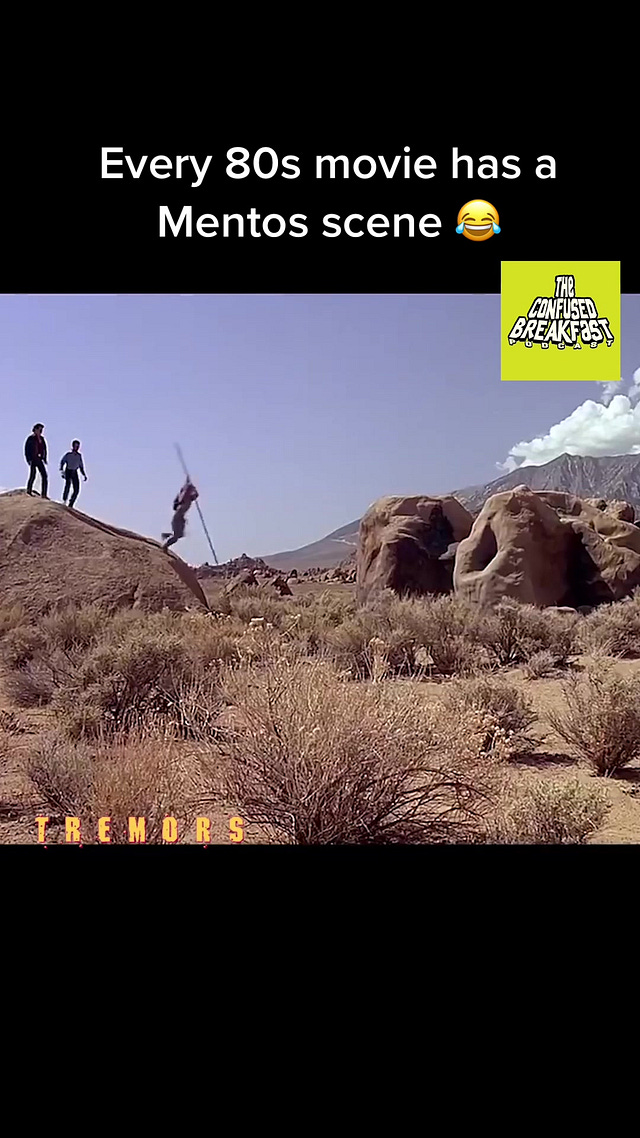👁️ Inneresting #150 - Who's watching?
Understanding how you see the world and who you're showing it to.
When thinking about the point of view of movies and tv shows, we might start with examples that feel distinctive. For example: Thomas Flight takes on Wes Anderson’s style as both a writer and director, and how his films make it impossible to avoid knowing that the audience is watching a constructed story. Part of the reason this stands out is that the tradition for American film and television is to conceal the work of creative people and present something that feels objective or natural.
But it never is objective or natural. Every piece of fiction, regardless of medium, was made with intent by a person or people with a point of view.
Stepping back to an earlier example of visual art: Amor Sciendi looks at the work of impressionist Mary Cassatt, showing the way she spun the artistic conventions of her time on their head and showed women not only as objects viewed by the audience and by other people depicted in paintings, but as people with an active gaze and interior life of their own. These were women in action, not simply posed for the artist.
Moving back to motion pictures, Lady Lope offers some breakdown on the connection between cinematic storytelling and the male gaze—the idea that the anticipated audience that a film is designed for and designed by carries traits connected to whiteness, masculinity, and heteronormativity. There’s also a section on Daughters of the Dust, a film written and directed by Julie Dash, as an example of filmmaking that works in opposition to this viewpoint. Nicole Erin Morse uses two scenes to show how The Matrix acknowledges and then subverts the audience’s expectations of the male gaze.
Maia C asks if there is an equivalent female gaze, and how it could not simply a reversal of who is objectified by the camera and storytelling. It’s a question about filmmaking that prioritizes empathy over objectification. Ty Black changes the terms, thinking about a potential feminine gaze that isn’t defined by the sex or gender of the filmmakers, but is about interrogating what it feels like to be watched.
And YouTuber Jessie Gender moves the conversation toward an understanding of the cisgender gaze—specifically how narratives about transgender people are often filtered through cisgender actors and filmmakers for a cisgender audience. It’s an argument about how narratives that attempt to be sympathetic can still promote an idea of otherness and objectification.
The things writers put on the page, and the way they choose to feature them, are filtered through the mental lens of how they look at the world. What writers anticipate others will find important, interesting, or novel. Like Alexandra Horowitz’s On Looking explains it, our habits and learned definitions for what does and doesn’t matter create an unconscious filtering of our experiences. Becoming mindful of those unconscious filters and questioning them is part of making meaningful choices about what stories to tell and how to tell them.
WGA Strike Reading
A number of WGA contract proposals directly connect to work promoting diversity and equity in writing for film and television. Brande Victorian speaks to underrepresented writers about how improving working conditions for writers can keep diverse voices in the room and on the screen:
“Writers from historically marginalized communities are the first ones who suffer when the belt tightens,” explains Lisa Takeuchi Cullen, vice president of the WGA East and co-chair of its Committee for Inclusion & Equity.
Though streaming has led to an influx of shows about diverse communities, many of the writers rooms for those series are mini rooms, meaning they last no longer than 20 weeks, notes Cullen, who says she once worked in a mini room that was only three weeks long.
What was the AMPTP response to WGA proposals to protect writers’ rooms and make sure time of employment helps writers maintain a livable income? They rejected the proposals and refused to make a counter offer.
Also in the WGA’s proposals, regulating the use of AI so that an AI can’t be considered a writer of original or source material. The AMPTP rejected this and countered with an assurance that there would be annual meetings to discuss new technological developments with no assurances of how those technologies would be used in the interim.
One concern related to AI generating narrative work: the potential for ignoring underrepresented voices and amplifying biases. Olga Akselrod gives an overview of the ways AI tools reflect unfair biases:
Bias is often baked into the outcomes the AI is asked to predict. Likewise, bias is in the data used to train the AI — data that is often discriminatory or unrepresentative for people of color, women, or other marginalized groups — and can rear its head throughout the AI’s design, development, implementation, and use.
For a deeper dive into one specific area this impacts, take a look at the results of Cambridge researchers evaluating AI tools that claim to reduce bias in hiring (spoilers: they do not work).
Also consider Jay Castello’s attempt to have AI generate fan fiction:
The AI algorithms clearly lean toward heterosexuality. That they also favor Harry Potter is related. Everything these generators produce leans generic, trending toward both the dominant model for sexuality and the media products with the largest overall cultural footprints. They do not — and cannot — easily respond to the nuances of fandom, with its much more diverse set of interests and a countercultural tendency toward queerness. In short, their responses to simple fic prompts are a good demonstration of how these tools fail to capture the human heart that sits at the center of any decent art or community.
More broadly, the habit of text generators to approach the average, rather than be able to adapt to the nuances of individual need, has much bigger ramifications than a fondness for straight ships. Tools trained on vast content scrapes will replicate whatever is most common. It’s not hard to imagine what perspectives get lost in that process.
Are you new here?
Inneresting is a weekly newsletter about writing and things that are interesting to writers. Subscribe now to get more Inneresting things sent to your inbox.
Yes, we can still Write Sprint!
The WGA is on strike, and there are rules to follow for all Guild members. And if you’re pre-WGA, following these rules is a way to support the strike (and avoid jeopardizing potential future Guild membership for yourself).
But does that mean no writing whatsoever? Is the Write Sprint thread shutting down?
No. We’re still here. Writing is how writers explore ideas and understand the world. Just because you shouldn’t write material for any struck company doesn’t prevent you from writing for yourself.
So it’s time to blog. To work on a book or a short story. To develop that idea you haven’t told anybody about that just sings to you.
The fight to protect the viability of writing as a professional career also means upholding the idea that the written word and act of writing have value—Value generated by a human being putting words on the page.
Join your fellow humans this week—set aside time for a Write Sprint.
What’s a Write Sprint?
John wrote up an explanation, but here’s the short version: Set a timer for 60 minutes, close down all distractions, and do nothing but write until that timer goes off.
Shout out to last week’s Sprinters Brian Matusz, Elyse Moretti Forbes, and Aimee Link!
Previously on Inneresting…
In case you missed it, in last issue’s most clicked link
Other Inneresting Things…
Chris Moore, producer on films such as Good Will Hunting and Manchester by the Sea, offers an argument for how the rise of streamers squeezes out independent producers and reduces the importance of making individual successful films:
If the company spends time and energy on only certain audiences, the numbers fall, and that company becomes a niche; however, subscription services cannot cater only to niches, they must try to be everything to all people, which places more value on the content provider and its library than the quality of each individual piece of content. If your goal is to gain and keep subscribers, the subscribers must feel they are important to the company.
While subscription-based distributors may know how many people watch a piece of content and for how long, they do not pay upon success, nor do they share those numbers in a way that provides bonuses or profit participations for the filmmakers, producers being part of that team.
Charlie Jane Anders explores the inconsistent uses of universal translators/baseline languages in sci-fi and fantasy and considers how the communication difficulties across cultures (or species) can be a compelling source for conflict.
Reading the room

 Tiktok failed to load.
Tiktok failed to load.Enable 3rd party cookies or use another browser

And that’s what’s inneresting this week!
Inneresting is edited by Chris Csont, with contributions from readers like you and the entire Quote-Unquote team.
Are you enjoying this newsletter?
📧 Forward it to a friend and suggest they check it out.
🔗 Share a link to this post on social media.
🗣 Have ideas for future topics (or just want to say hello)? Reach out to Chris via email at inneresting@johnaugust.com or Mastodon @ccsont@mastodon.art







